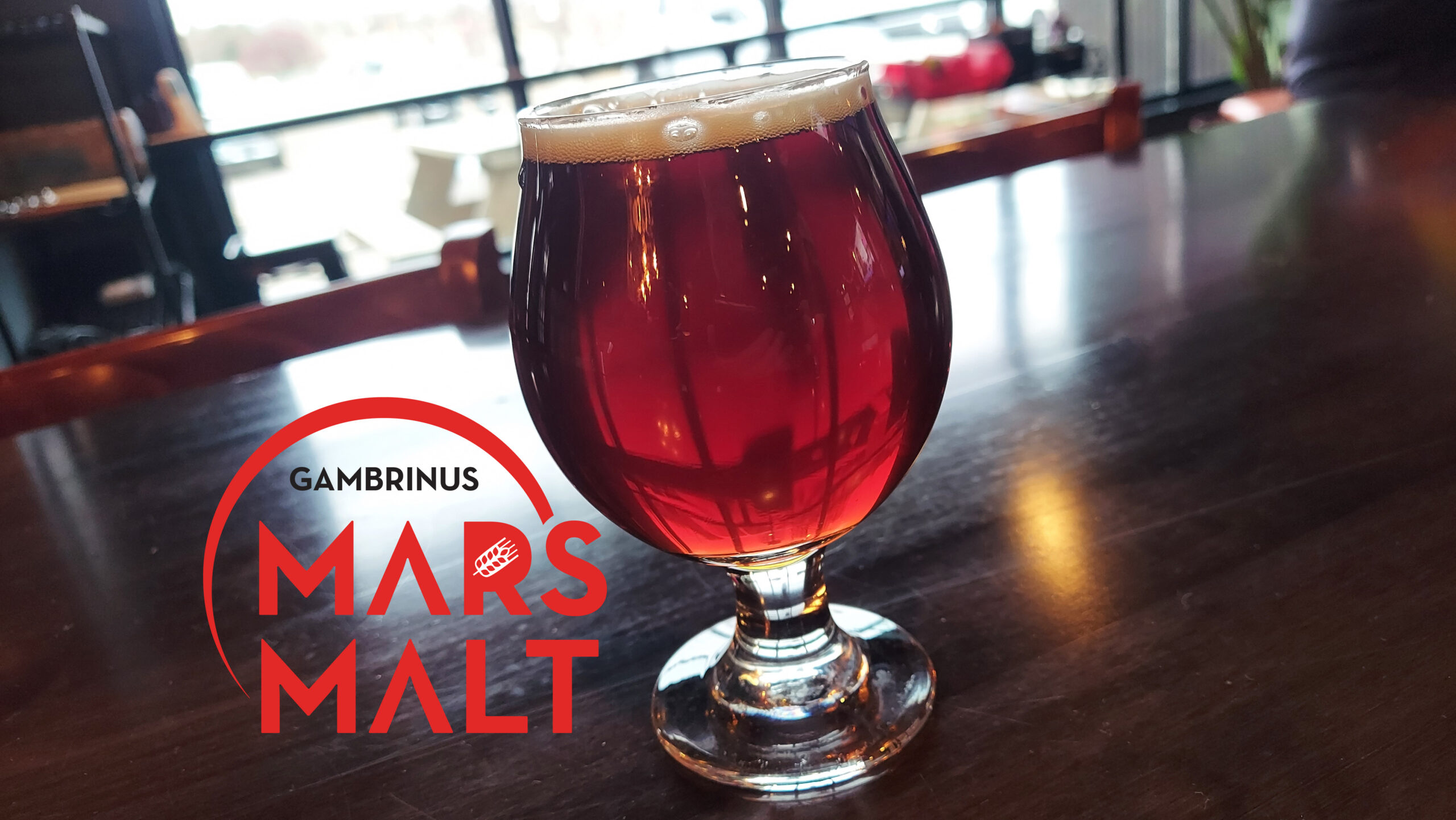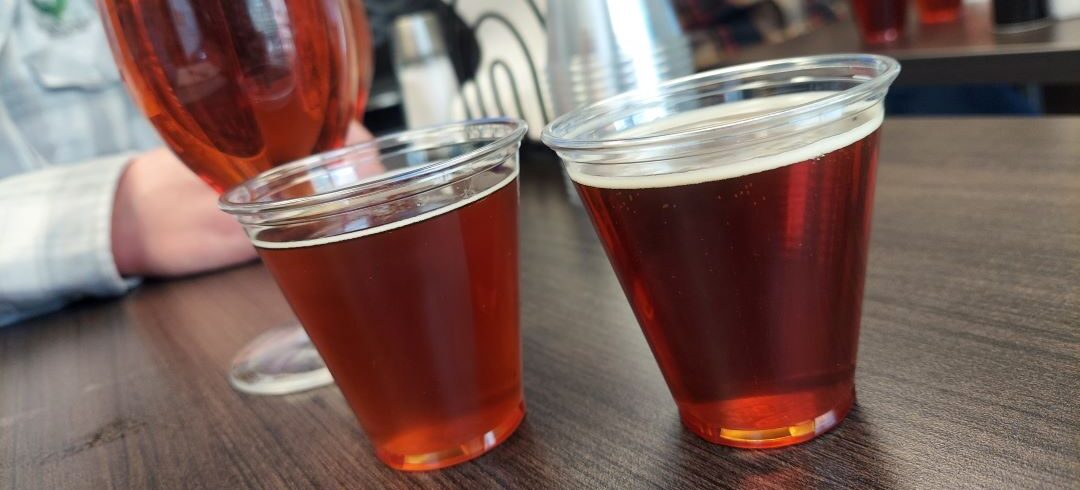Mars Malt for Märzenbier

While the crisp, cool days of fall seem a world away, the truth is it’s never too soon to think about Oktoberfest beers. In fact, German-Style Märzen – or Märzenbier (literally March beer) – are traditionally brewed in the spring or early summer and given a lengthy lager treatment for optimal malt-driven drinking pleasure in the autumn. If you’re one of the many planning an Oktoberfest right now, consider using Gambrinus Mars Malt. Crafted specifically to lend beautiful red hues to beers, it also provides unique malt flavors that will complement the style.
To assess the malt, the Rahr Technical Center recently brewed a Mars Lager with a grist of 100% Mars Malt, hopped with Saaz, and fermented with Fermentis W-34/70 German lager yeast. We sat down alongside Brewers Sean Tynan and Jake Thompson for a pre-conference sensory panel. They shared their first impressions of brewing with Mars Malt, including how it definitely gives them some serious Oktoberfest vibes. Pass the pretzels and listen up!
Pro Tip: Want to taste their Mars Lager yourself? Sean and Jake will be serving the beer at the upcoming Craft Brewers Conference in Indianapolis.

RahrBSG: How did things go on brew day using this new malt at 100% for the first time?
Sean Tynan: On the hot-side things went smooth. Our main concern was how the color would turn out. Was it going to be red enough? We’re very happy with the result. In a larger glass, like a tulip or a mug, it looks more red – a lovely deep red at that. Sometimes in a smaller glass, it has more of an amber color that’s very reminiscent of Oktoberfest.
Jake Thompson: To me, the beer is a little bit darker than what I think of as a Vienna Lager. It’s weird when you get into conversations of color and hues, because you can have the same SRM but you can have different hues to it. This Mars Lager is 20 SRM, but it clearly has a lot of those red and ruby hues to it. But you could also have a 20 SRM beer that is just brown. It’s the same number, but it can look totally different.

RahrBSG: What do you get from the flavor of Mars Malt at 100% of the grist?
Sean: Stone fruit. Graham cracker. There’s a decent amount of sweetness, but there’s not a ton of body coming through.
Jake: That sweetness makes me think of red stone fruit specifically – cherry, plum. Some raisin. And, that is something that I have noticed in all the different beers I’ve tried with Mars Malt as well.
Sean: A lot of people have mentioned a slightly roasted note on the finish.
Jake: It’s not like the roast from a dark malt. It’s more like a toffee kind of roasted flavor, more than just toasted. Having this as a base malt is excellent. If we were to use it again for a beer like this, we’d probably drop it to 70 or 80 percent. Cut it with Pilsner malt. Maybe a bit of Carafa just during the sparge to increase those ruby hues.

RahrBSG: After tasting this 100% Mars Lager, you’ve both said that Mars Malt would be an interesting addition to an Oktoberfest. How would you work this into an existing Oktoberfest recipe?
Sean: I think some of the fruity notes that we’re talking about would work really well in an Oktoberfest. We lagered this for only two months. We lager our Oktoberfest for at least three months. When we tasted this, there were a lot of reminiscent notes of our Oktoberfest. As we prepare for our annual brew of Oktoberfest, we want to adjust it with this malt and see where it ends up.
Jake: If you added more breadiness on top of this Mars Lager’s flavor it would be very close to Oktoberfest. Tasting it now, I’m asking myself what percentage of this we’d want to keep in an Oktoberfest. I was thinking 50% of this flavor with more of the breadiness of a Munich malt on top of that. I think some kind of Munich combination would get you there: light, dark, whatever you think. And then some Pilsner malt as well. That would get you that nice light breadiness.
Sean: That other 50% could be a blend of Weyermann® Barke® Pilsner and Weyermann® Barke® Vienna or Weyermann® Barke® Munich. There’s a lot of options to build malt complexity.
RahrBSG: The benefit of the Mars Malt is both the potential for unique color as well as the flavor? Almost sounds like a base malt meets specialty malt.
Jake: It’s that raisin-y aspect of it; that aspect of it is very predominant in this beer. So, as part of a mash bill I think it gives a nice perception of sweetness rather than actual residual sweetness. It doesn’t “drink” sweet, but it has sweetness. This has that red fruit, stone fruit, toffee, caramel character that makes you think of those sweet things without actually being sweet. That, as a portion of an Oktoberfest, with breadiness on top will give you a super drinkable yet malty experience.
Sean: If you’ve got a one-off seasonal beer in your schedule and just one shot to brew it, you don’t want to miss the target. If you want something with a reddish color or hue, Mars Malt is a great way to start your grist bill.
Jake: It’s easy to mix too many malts together and get just brown – like a muddled brown, nothing special. But after having used Mars Malt at 100% I’m more comfortable getting that red hue with it as part of the grist.

Come taste Mars Lager, made with 100% Gambrinus Mars Malt, and meet Sean and Jake at this year’s Craft Brewers Conference in Indianapolis. The guys will be more than happy to talk with you about the beer and other potential uses for the malt. You can find them and the beer in the RahrBSG Village, booth #4405.
We’ve also been talking with other brewers who have used Mars Malt in a bevy of red ale styles: Irish Red Ale, West Coast Red Ale, Red Double IPA, Canadian Red Ale. Look for more content from these breweries to drop on the RahrBSG blog in the coming months.